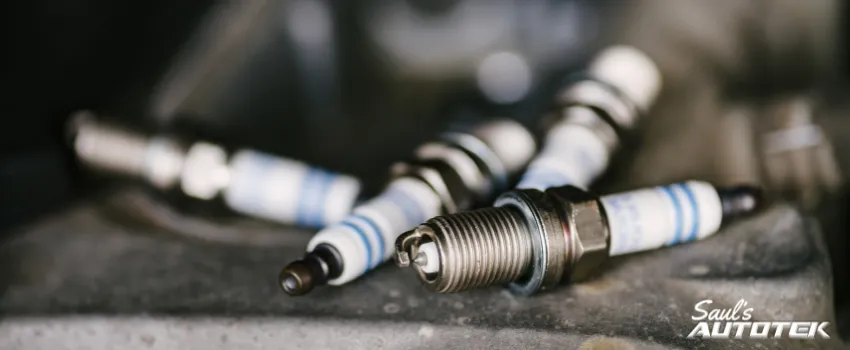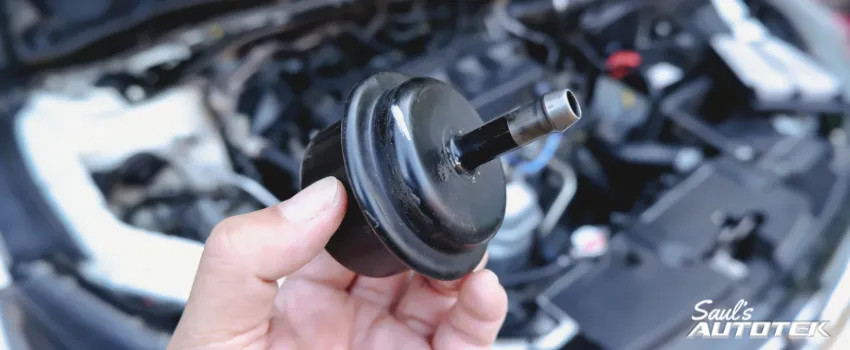Hi there. I’m Saul Reisman, and we are going to take a look now at the rear half of this Denver 2011 Jeep Wrangler Rubicon Unlimited.
We’ve already taken a look at all the front-end components from a drive-train standpoint to see how we could upgrade them and keep this guy as off-road capable and as safe as possible. Now we’re gonna take a look at the read end, where the power is always being put to the pavement to see how we can keep it in the exact same form.
The vehicle came into us and the actual gear set inside the differential was broken. If we actually take a look inside here, this vehicle, being a Rubicon, came from the factory with an electronically locking differential. Now, you remember earlier we were talking about the front differential, which is open. Torque takes the path of least resistance no matter what, or as we politely call in the industry a one-tire fire. Do a “burn out” to try and accelerate, you get one tire spinnin’ smoke and that’s it.
The rear of the vehicle, from the factory, was optioned two different ways. With an open differential, which would provide the same result, or with a factory electronically locking differential. Now, the work “electronically” makes a significant difference in the way that this application has been engineered. A differential can lock, as we saw on the front end, mechanically, from spring-loaded clutches, with no external input. Those, in our personal opinion, are the most reliable. There are no lines going to them to fail. There are no external components. Everything is in a sealed housing. But, a rear differential can’t be locked all the time. If you were to try and make a right turn at a red light with a locked differential, you’d get chirpin’ tires every time. Not only would that destroy the tires, but it’s not the most polite in a quiet, happy society.
As a result, we have a few different options. After-market manufacturers make cable-driven lockers or electronically driven lockers. At the same time, Chrysler Mopar Jeep makes an electronic locker of their own. If we look closely inside this housing, the gear spins in the middle and we have two caps that are holding the bearings so that this entire housing can rotate. When it’s rotating, you’ll notice we have a gap right here. This is actually a giant electromagnet. There is copper winding inside here and a copper winding inside here, and when electricity is applied through a wire, which I would normally show you, but in this case that wire has broken internally, these two clutch packs fuse together and magnetically become stuck. Now, this gives the benefit of a locking differential by allowing power to be locked 50-50 right and left and truly put the power to the pavement, and at the same time means that with the flick of a switch, it can operate as an open differential and still be smooth, polite and happy for downtown driving.
In this case, the actual differential itself was installed incorrectly. Somebody had previously swapped this axle into this vehicle as an upgrade because this vehicle only had an open differential from the factory. However, when they installed this electronically magnetic locking differential, they didn’t do it quite right, and they left it engaged permanently by not applying electricity to it and shorting the wires. As a result, it bound and fused and is now stuck in the locked position. It is now essentially a spool, a solid piece of metal that cannot be unlocked in any way.
In this case, we’re gonna be replacing this unit with a brand-new Eaton electronic locking differential. The reason we’re going with an Eaton rather than the factory replacement is an Eaton component uses internal gears that push outward to apply pressure, rather than a giant external magnet. That’s a much more reliable design, and one that, if it were to daily in the field, would fail into the open position, resulting in a much more predictable drive to get you home. While this did put power to the ground, this is not safe for Denver highway travel. The actual owner of this vehicle, as a result of the way this vehicle was handling, almost got in some legal trouble and kept getting pulled over because of the way that the vehicle would unpredictably move when throttle was applied or throttle was let off of, as the vehicle would either pitch right or pitch left accordingly.
The next component that really affects this and how this wears is truly the wheels and tires. The larger the wheel and tire are, the greater the effect on these gears, and as a result of putting an oversized wheel and tire combination with the factory gear set in here, we’ve actually done damage to the bearing. If we look externally, we’ll see that there’s moisture inside this housing. That’s because the wheel seals have actually broken free and started to leak gear oil. å
On these upper and lower surfaces, these are the brake shoes that are supposed to hold the parking brake of the vehicle. They’re currently being lubricated in gear oil. Now, while they’re being covered in gear oil, they can’t really generate a lot of friction. The design of a brake is to have high friction. The design of motor oil is to have low friction. As a result, these brakes are worthless. They will not stop this vehicle in any way, shape or form. If the parking brake were applied in an emergency, they literally would just continue to spin, generate lots of smoke and absolutely nothing would slow the vehicle down.
As a result, we’re gonna be upgrading to an Eaton e-locking differential, where we can flick a switch on the dashboard to lock or unlock it at any point. We’ll also be putting new bearings and seals into this axle with Timken bearings that are stronger than the factory produced Dana Spicer bearings. Last but not least, we’ll be replacing the brake shoes and the hardware as well, since they are completely oil soaked.
The only other component we’re going to be looking at in the back of this vehicle is what we call the track bar, which is designed to hold the track, the width of the vehicle, centered under the vehicle. Because this vehicle has coil springs, there’s very little to keep the axle centered side to side underneath it. However, this is extremely important. Not only is the thrust angle must be straight forward 100 percent of the time, or a vehicle will dogleg down the road, but the axle can compress into the body of the vehicle if this isn’t done safely.
We’re gonna move this brake caliper out of the way, and we can actually show you here in the back, the track bar itself normally mounts to the axle of the vehicle and physically runs across the vehicle to the frame. This allows it to pivot at both ends so that the suspension can still cycle vertically, but keep the axle centered. In this case, this vehicle saw such abuse that the actual track bar bracket has broken off the axle, broken its welds and is completely free.
Now, there are four arms that hold the suspension together, and many owners believe that that’s enough to keep them safe. It’s not. If the factory thought it was safe, they wouldn’t have put this on here, and here’s why. If we take a look under the front of this axle, right here where the differential is actually spinning and attaching to the drive shaft, we see this nice mark right into the side, where it’s shiny, because this differential housing came up and over into it under suspension compression. It’s worn through, and we can see metal fragments. This is almost completely exposed. This is the fuel tank. If this ruptures, fuel will exit the vehicle and be released directly onto the exhaust system. This could results in immediate fire, explosion and or serious calamity to owner and vehicle.
Please don’t take your safety as a risk here. We are happy to show you each and every component about how we can make this a better, strong system, so that not only can it do what you want it to do, but it can do it safely, reliably and for many years to come.
Before you take your brand-new, expensive Jeep toy out in the woods and end up breakin’ a whole bunch of parts, come and see us. Let’s make a game plan. Let’s figure out what your goal is, how we can keep you there as reliably and cost-effectively as possible. That way we can keep you and your family on the trail and not on these bays.
I’m Saul Reisman here at Saul’s Automotive. Thanks for taking the time to watch and learn about these Jeeps with us this morning. We’ll talk to you soon.
We can be reached seven days a week for all of your auto mechanic repair needs at 303-919-7769. Thank you.
Schedule Your FREE diagnostic Subaru Outback Auto Repair Upkeep and Repair Appointment
Check out Our Reviews On Yelp! And Leave A Great One For Us!
Join Our Conversation on Facebook
Explore Our Exceptional Denver Auto Repair Services
- Brake Repair Service
- Suspension Repair
- Steering Repair
- Engine Repair
- Automotive Air Conditioning and Heating Repair





